
漢德百科全書 | 汉德百科全书
 Party and government
Party and government
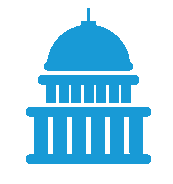
 Alexander Stubb
Alexander Stubb

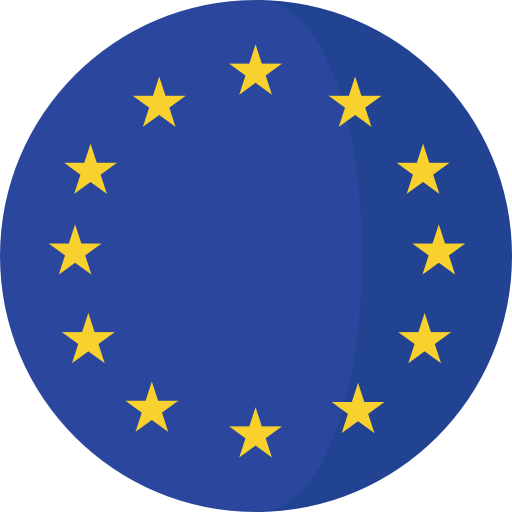 European Union
European Union

 European Union
European Union
 Acting heads of government in the European Union
Acting heads of government in the European Union
 President or Chairman
President or Chairman
 President or Chairman
President or Chairman
 Finnland
Finnland


凯-约兰·亚历山大·斯图布(瑞典語:Cai-Göran Alexander Stubb,芬兰瑞典语:[kai jœːran aleksˈandær stʉbː],1968年4月1日—),芬兰民族联合党政治人物。
2004年到2008年,斯图布是欧洲议会议员。2008年到2011年任芬兰外交部长,2011年到2014年任欧洲事务和对外贸易部长,2014年6月至2016年6月为民族联合党的领导人,2014年到2015年任芬兰总理。2015年5月至2016年6月任芬兰财政部长。
Cai-Göran Alexander „Alex“ Stubb[1][2] (finnlandschwedische Aussprache: [kai jøːran alːeksˈandɛr stɵbː], * 1. April 1968 in Helsinki) ist ein finnischer Politiker (Nationale Sammlungspartei), Politikwissenschaftler und seit dem 1. März 2024 Präsident der Republik Finnland (Tasavallan Presidentti).[3]
Vom 29. Mai 2015 bis 22. Juni 2016 war er Finanzminister im Kabinett Sipilä, zuvor war er vom 24. Juni 2014 bis 29. Mai 2015 Ministerpräsident Finnlands. Anschließend war er von 2017 bis 2019 Vizepräsident der Europäischen Investitionsbank in Luxemburg und ist inzwischen als Professor und Direktor der Florence School of Transnational Governance am Europäischen Hochschulinstitut in Florenz tätig.

 Asia-Pacific Economic Cooperation,APEC
Asia-Pacific Economic Cooperation,APEC

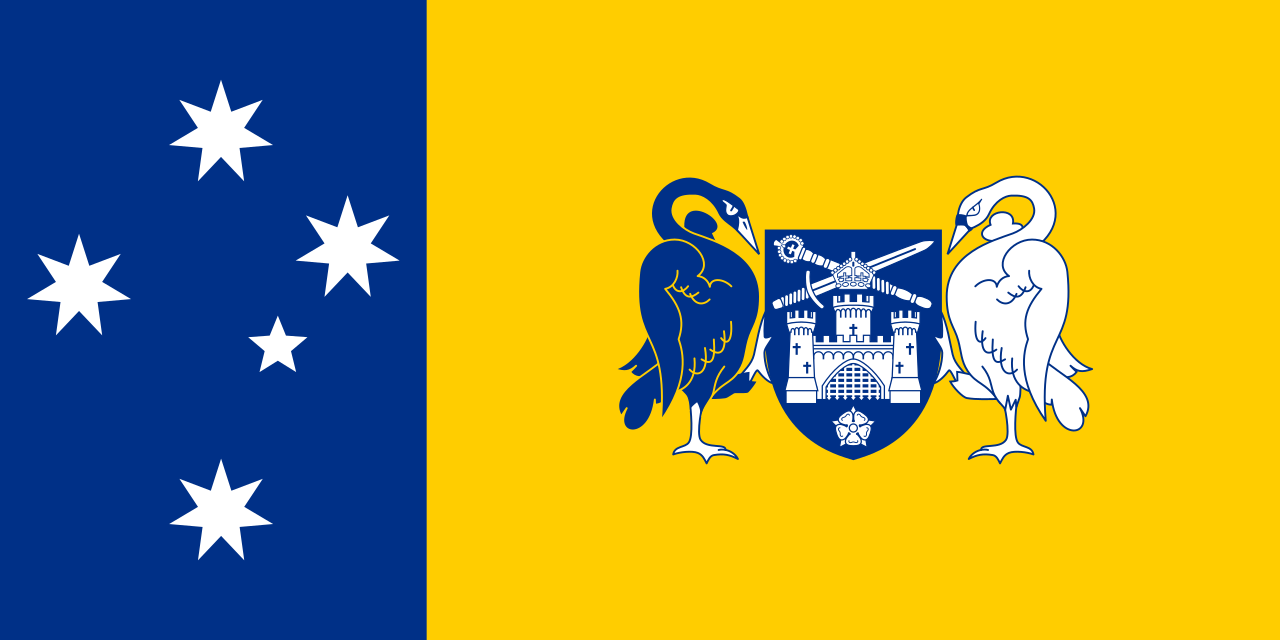 Australian Capital Territory-ACT
Australian Capital Territory-ACT
 Australia
Australia
 Beijing Shi-BJ
Beijing Shi-BJ

 British Columbia-BC
British Columbia-BC
 Brunei Darussalam
Brunei Darussalam
 Chile
Chile
 China
China

 Hand in Hand
Hand in Hand

 Hawaii-HI
Hawaii-HI
 Hongkong Tebiexingzhengqu-HK
Hongkong Tebiexingzhengqu-HK
 Indonesia
Indonesia
 Japan
Japan
 Canada
Canada
 Kantō
Kantō
 Kinki
Kinki
 Malaysia
Malaysia
 Mexico
Mexico
 New Zealand
New Zealand

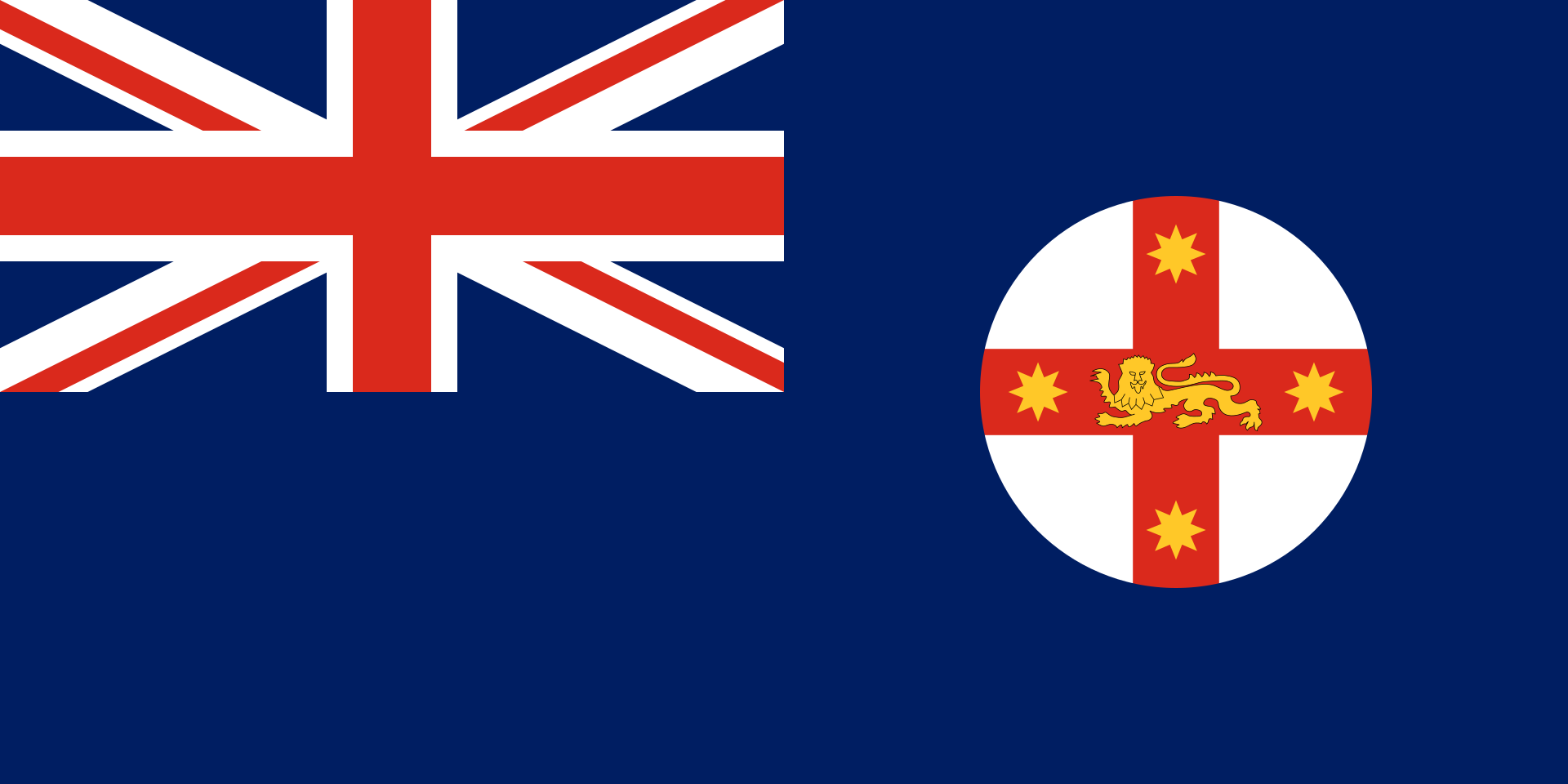 New South Wales-NSW
New South Wales-NSW
 Papua-Neuguinea
Papua-Neuguinea

 Party and government
Party and government

 Party and government
Party and government
 Asia-Pacific Economic Cooperation,APEC
Asia-Pacific Economic Cooperation,APEC
 Peru
Peru
 Philippines
Philippines
 Republic of Korea
Republic of Korea
 Russia
Russia
 Shanghai Shi-SH
Shanghai Shi-SH
 Singapore
Singapore
 Taiwan Sheng-TW
Taiwan Sheng-TW
 Thailand
Thailand
 United States
United States
 Vietnam
Vietnam

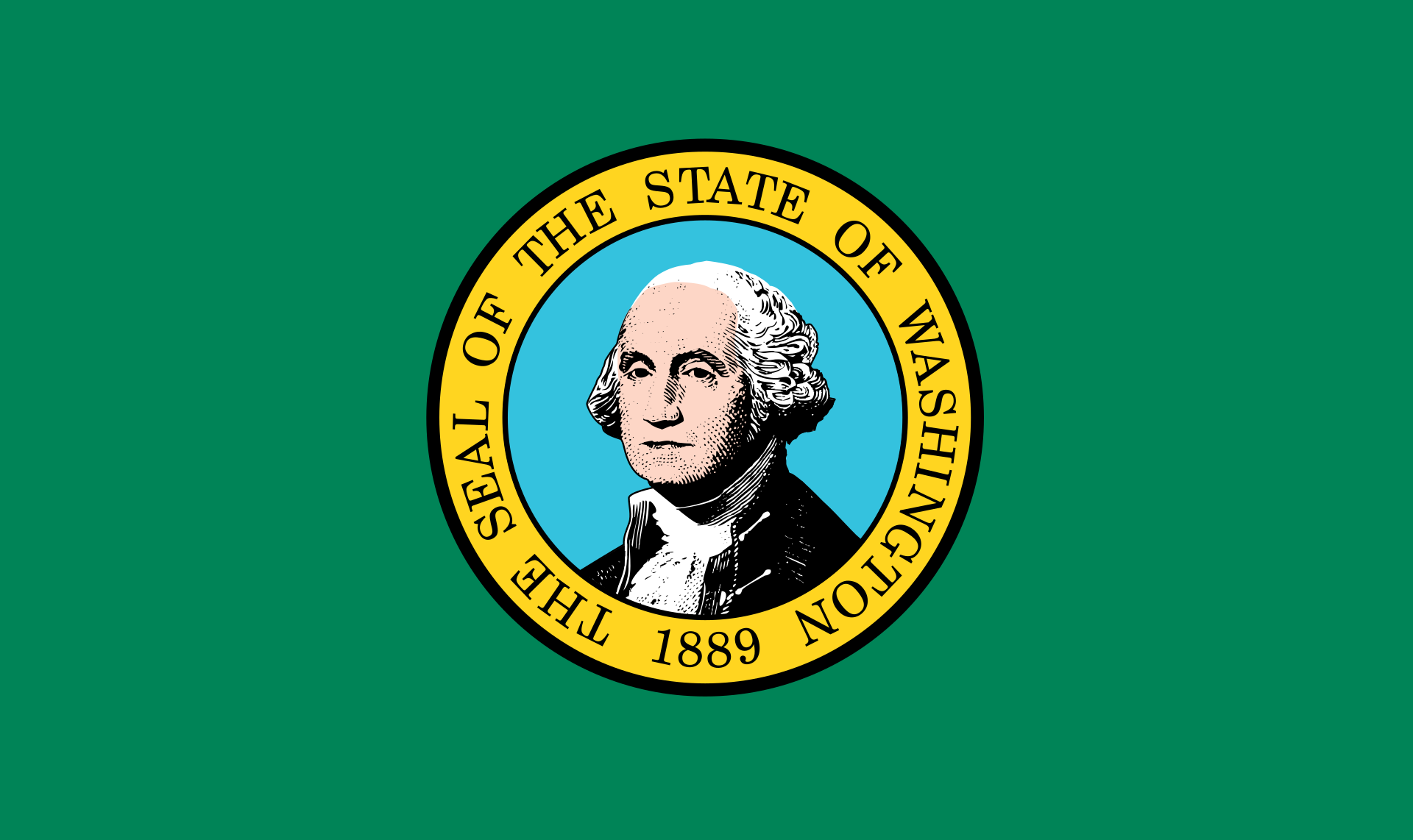 Washington-WA
Washington-WA

 Important International Organizations
Important International Organizations
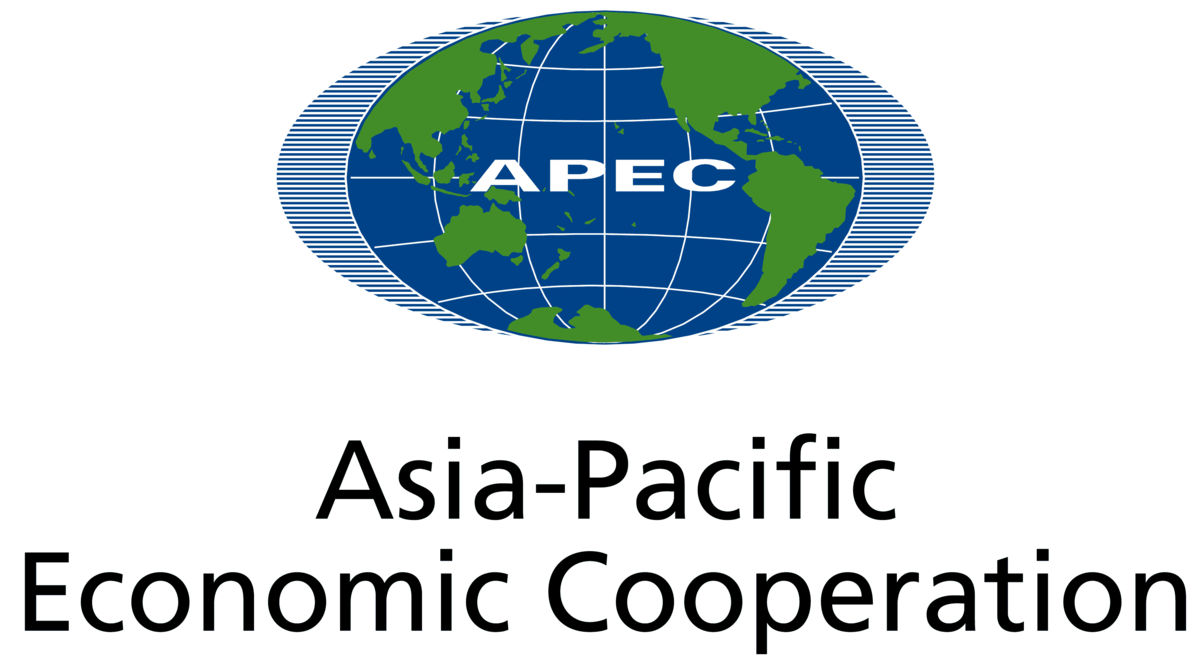
Die Asiatisch-Pazifische Wirtschaftsgemeinschaft (für englisch Asia-Pacific Economic Cooperation, kurz APEC, auch übersetzt als Asiatisch-Pazifische Wirtschaftskooperation oder Asien-Pazifik-Forum) ist eine internationale Organisation, die es sich zum Ziel gesetzt hat, im pazifischen Raum eine Freihandelszone einzurichten.
In den 21 APEC-Staaten lebt knapp die Hälfte der Weltbevölkerung. Der Wirtschaftsraum erbringt mehr als die Hälfte der Weltwirtschaftsleistung und ist eine der am schnellsten wachsenden Wirtschaftsregionen der Welt.
亚太经济合作组织(简称亚太经合组织;英语:Asia-Pacific Economic Cooperation,缩写:APEC),是亚太区内各地区之间促进经济成长、合作、贸易、投资的论坛。此组织的创办在历史上取代了该区域的冷战结构,但由于日本在该区域会因过去历史记忆引发负面评价,所以由澳大利亚主导创始事项[1]。
始设于1989年,现有21个经济体成员。亚太经合组织是经济合作的论坛平台,其运作是通过非约束性的承诺与成员的自愿,强调开放对话及平等尊重各成员意见,不同于其他经由条约确立的政府间组织。“APEC”与“Asia-Pacific Economic Cooperation”均是亚太经济合作组织的注册商标。[2]
アジア太平洋経済協力会議(アジアたいへいようけいざいきょうりょくかいぎ、英: Asia-Pacific Economic Cooperation)は、環太平洋地域における多国間経済協力を進めるための非公式なフォーラム[2]である。略称、APEC(エイペック[3][4])。
「アジア太平洋」という概念が最初に打ち出されたのは、永野重雄が1967年に発足させた太平洋経済委員会(PBEC)という経済団体の設立時であるとされるが[5][6][7]、具体的にこうした地域概念が政府レベルの協力枠組みに発展する萌芽は、1978年、日本の大平正芳首相が就任演説で「環太平洋連帯構想」を呼びかけたことにある。これを具体化した大平政権の政策研究会「環太平洋連帯研究グループ」(議長:大来佐武郎、幹事佐藤誠三郎)の報告を受け、大平がオーストラリアのマルコム・フレイザー首相に提案して強い賛同を得たことが、1980年9月の太平洋経済協力会議(PECC)の設立につながった。PECCは地域における様々な課題を議論し研究するセミナーといった趣のものであったが、これを土台にして、各国政府が正式に参加する会合として設立されたのが、APECである[8][9]。
APECは、1989年にオーストラリアのホーク首相の提唱で、日本・アメリカ合衆国・カナダ・韓国・オーストラリア・ニュージーランド及び当時の東南アジア諸国連合(ASEAN)加盟6か国の計12か国で発足し、同国のキャンベラで閣僚会議(Ministerial Meeting)を開催した。また、1993年には米国のシアトルで初の首脳会議(Economic Leaders' Meeting)がもたれた。現在は、首脳会議、及び、外相、経済担当相による閣僚会議をそれぞれ年1回開いている。シンガポールに常設事務局を置き、開催国から任期1年で事務局長が選任されている[10]。 参加しているメンバーは、21カ国・地域で、2012年現在、人口では世界の41.4%、GDP(国内総生産)では57.8%、貿易額では47%を占めている。
APECは、開かれた地域協力によって経済のブロック化を抑え、域内の貿易・投資の自由化を通じて、世界貿易機関(WTO)のもとでの多角的自由貿易体制を維持・発展することを目的としてきたが、近年のWTOの新ラウンドの停滞や自由貿易協定締結の動きの活発化などによって、その存在意義が問われている。
Asia-Pacific Economic Cooperation (APEC) is an inter-governmental forum for 21 Pacific Rim member economies[2] that promotes free trade throughout the Asia-Pacific region. Inspired from the success of Association of Southeast Asian Nations (ASEAN)’s series of post-ministerial conferences launched in the mid-1980s, the APEC was established in 1989 in response to the growing interdependence of Asia-Pacific economies and the advent of regional trade blocs in other parts of the world; and to establish new markets for agricultural products and raw materials beyond Europe.[3][4][5] Headquartered in Singapore, the APEC is recognised as one of the oldest forums and highest-level multilateral blocs in the Asia-Pacific region, and exerts a significant global influence.[6][7][8][9][10][11]
An annual APEC Economic Leaders' Meeting is attended by the heads of government of all APEC members except Republic of China (Taiwan) (which is represented by a ministerial-level official under the name Republic of China as economic leader).[12] The location of the meeting rotates annually among the member economies, and a famous tradition, followed for most (but not all) summits, involves the attending leaders dressing in a national costume of the host country. APEC has three official observers: the Association of Southeast Asian Nations Secretariat, the Pacific Economic Cooperation Council and the Pacific Islands Forum Secretariat.[13] APEC's Host Economy of the Year is considered to be invited in the first place for geographical representation to attend G20 meetings following G20 guidelines.[14][15][16][17]
La Coopération économique pour l'Asie-Pacifique (en anglais : Asia-Pacific Economic Cooperation, APEC) est un forum économique intergouvernemental visant à faciliter la croissance économique, la coopération, les échanges et l'investissement de la région Asie Pacifique. Elle se réunit chaque année1.
L'Asia-Pacific Economic Cooperation (APEC), ossia Cooperazione Economica Asiatico-Pacifica, è un organismo nato nel 1989 allo scopo di favorire la cooperazione (o, più in generale, la crescita) economica, il libero scambio e gli investimenti nell'area asiatico-pacifica. Tale area (come suggerisce il logo stesso dell'APEC) coincide non solo con l'Asia Pacifica, ma potenzialmente con l'intero Pacific Rim.
L'APEC ha sede a Singapore, Paese considerato una delle tigri dell'Asia.
Dal punto di vista del diritto internazionale l'APEC si definisce organismo e non organizzazione internazionale perché, essendo composto da economie e non da Stati, è privo di una piena personalità giuridica. Ciò spiega, fra l'altro, come mai possano farne parte contemporaneamente la Cina continentale, Hong Kong e Taiwan, ossia tre realtà che, territorialmente (secondo Pechino e secondo tutti i governi che intrattengono relazioni diplomatiche con Pechino), appartengono a un unico Stato: la Repubblica Popolare di Cina.
APEC (Asia-Pacific Economic Cooperation, en español Foro de Cooperación Económica Asia-Pacífico) es un foro multilateral creado en 1989, con el fin de consolidar el crecimiento y la prosperidad de los países del Pacífico, que trata temas relacionados con el intercambio comercial, coordinación económica y cooperación entre sus integrantes.1
Como mecanismo de cooperación y concertación económica, está orientado a la promoción y facilitación del comercio, las inversiones, la cooperación económica y técnica y al desarrollo económico regional de los países y territorios de la cuenca del océano Pacífico. Fomentando un crecimiento económico inclusivo, equitativo, sustentable e innovador.2
La suma del Producto Nacional Bruto de las veintiuna economías que conforman el APEC equivale al 56 % de la producción mundial, en tanto que en su conjunto representan el 46 % del comercio global.
La APEC no tiene un tratado formal. Sus decisiones se toman por consenso y funciona con base en declaraciones no vinculantes. Tiene una Secretaría General, con sede en Singapur, que es la encargada de coordinar el apoyo técnico y de consultoría. Cada año uno de los países miembros es huésped de la reunión anual de la APEC. La vigésimo novena cumbre se realizó en noviembre de 2017 en Da Nang, Vietnam; y la próxima será en Santiago, Chile.
Азиатско-Тихоокеанское экономическое сотрудничество (АТЭС) (англ. Asia-Pacific Economic Cooperation, APEC) — форум 21 экономики Азиатско-Тихоокеанского региона для сотрудничества в области региональной торговли и облегчения и либерализации капиталовложений.
Целью АТЭС является повышение экономического роста, процветания в регионе и укрепление азиатско-тихоокеанского сообщества. В экономиках-участницах проживает около 40 % мирового населения, на них приходится приблизительно 54 % ВВП и 44 % мировой торговли[1].
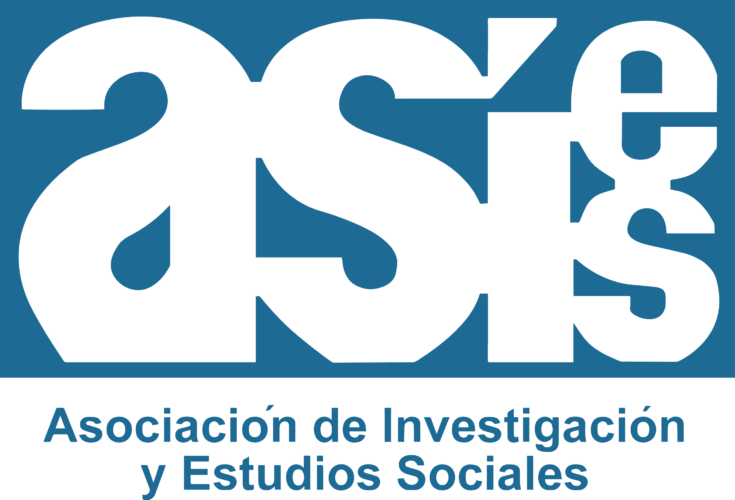


 Aleksandar Vučić
Aleksandar Vučić
 Alexis Tsipras
Alexis Tsipras
 Aljaksandr Lukaschenka
Aljaksandr Lukaschenka
 Almasbek Atambajew
Almasbek Atambajew
 Aung San Suu Kyi
Aung San Suu Kyi

 Beijing Shi-BJ
Beijing Shi-BJ
 Belt and Road Forum
Belt and Road Forum
 Bounnhang Vorachith
Bounnhang Vorachith
 China
China
 Doris Leuthard
Doris Leuthard
 Dschargaltulgyn Erdenebat
Dschargaltulgyn Erdenebat
 Generalsekretär der Vereinten Nationen
Generalsekretär der Vereinten Nationen
 António Guterres
António Guterres
 Hailemariam Desalegn
Hailemariam Desalegn

 Hand in Hand
Hand in Hand
 Hun Sen
Hun Sen
 International Renewable Energy Agency,IRENA
International Renewable Energy Agency,IRENA
 Adnan Z. Amin
Adnan Z. Amin
 Internationaler Währungsfonds
Internationaler Währungsfonds
 Christine Lagarde
Christine Lagarde
 Interpol
Interpol
 Jürgen Stock
Jürgen Stock
 Joko Widodo
Joko Widodo
 Li Keqiang
Li Keqiang
 Mariano Rajoy
Mariano Rajoy
 Mauricio Macri
Mauricio Macri
 Michelle Bachelet
Michelle Bachelet
 Najib Razak
Najib Razak
 Nawaz Sharif
Nawaz Sharif
 Nursultan Nasarbajew
Nursultan Nasarbajew
 Paolo Gentiloni
Paolo Gentiloni
 Präsident der Generalversammlung der Vereinten Nationen
Präsident der Generalversammlung der Vereinten Nationen
 Peter Thomson
Peter Thomson
 Ranil Wickremesinghe
Ranil Wickremesinghe
 Recep Tayyip Erdoğan
Recep Tayyip Erdoğan
 Rodrigo Duterte
Rodrigo Duterte
 Silk road
Silk road
 Shavkat Mirziyoyev
Shavkat Mirziyoyev

 Uhuru Kenyatta
Uhuru Kenyatta
 UNESCO
UNESCO
 Irina Bokowa
Irina Bokowa
 Viktor Orbán
Viktor Orbán
 World Bank
World Bank
 Jim Yong Kim
Jim Yong Kim

 Economy and trade
Economy and trade
 Wladimir Wladimirowitsch Putin
Wladimir Wladimirowitsch Putin
 World Economic Forum,WEF
World Economic Forum,WEF
 Klaus Schwab
Klaus Schwab
 World Health Organization, WHO
World Health Organization, WHO
 Margaret Chan
Margaret Chan
 World Trade Organization
World Trade Organization
 Roberto Azevêdo
Roberto Azevêdo
 Xi Jingping
Xi Jingping
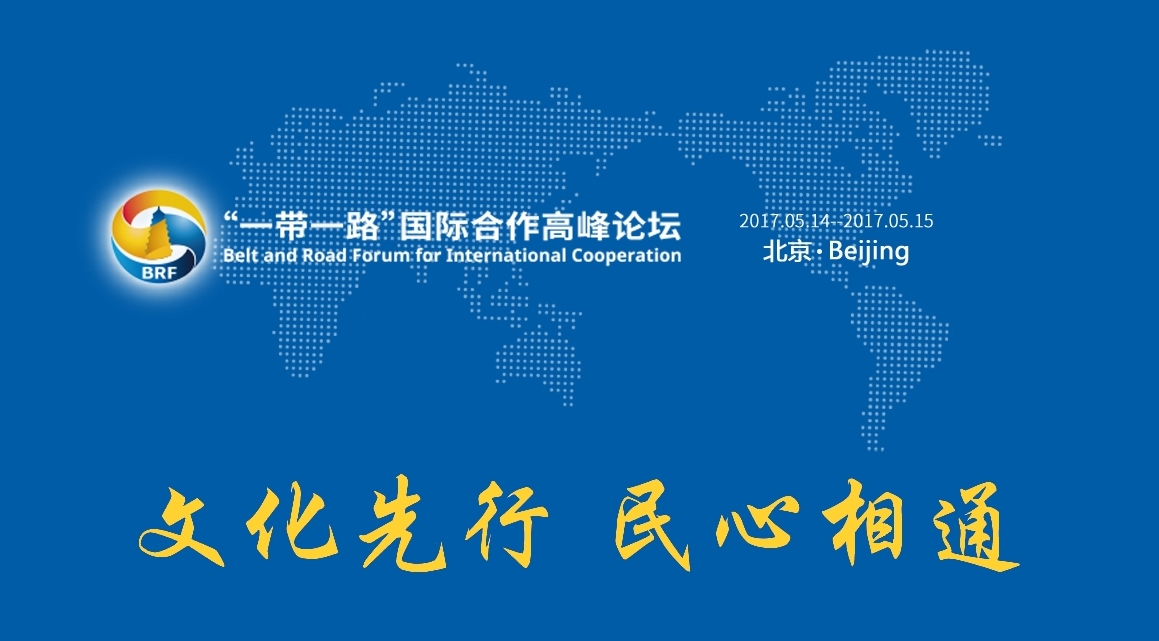


Iran, auch: der Iran (mit Artikel),[6] persisch ايران, DMG Īrān, [ʔiːˈɾɒːn], Vollform: Islamische Republik Iran, vor 1935 auf internationaler Ebene (exonym) auch Persien, ist ein Staat in Vorderasien. Mit rund 83 Millionen Einwohnern (Stand 2019)[7] und einer Fläche von 1.648.195 Quadratkilometern zählt Iran zu den 20 bevölkerungsreichsten und größten Staaten der Erde. Hauptstadt, größte Stadt und wirtschaftlich-kulturelles Zentrum Irans ist Teheran, weitere Millionenstädte sind Maschhad, Isfahan, Täbris, Karadsch, Schiras, Ahvaz und Ghom. Der Iran bezeichnet sich selbst seit der Islamischen Revolution 1979 als Islamische Republik.
Iran besteht großteils aus hohem Gebirge und trockenen, wüstenhaften Becken. Seine Lage zwischen dem Kaspischen Meer und der Straße von Hormus am Persischen Golf macht ihn zu einem Gebiet von hoher geostrategischer Bedeutung mit langer, bis in die Antike zurückreichender Geschichte.
Nachdem sich zwischen 3200 und 2800 v. Chr. das Reich Elam gebildet hatte, vereinigten die iranischen Meder das Gebiet um 625 v. Chr. erstmals zu einem Staat, der die kulturelle und politische Führerschaft in der Region übernahm. Die von Kyros begründete Dynastie der Achämeniden regierte von Südiran aus das bis dato größte Reich der Geschichte. Es wurde im Jahre 330 v. Chr. durch die Truppen Alexanders des Großen zerstört. Nach Alexander teilten seine Nachfolger (Diadochen) das Reich unter sich auf, bis sie im iranischen Bereich um die Mitte des 3. Jahrhunderts v. Chr. durch die Parther abgelöst wurden. Auf diese folgte ab etwa 224 n. Chr. das Reich der Sassaniden, das bis zum 7. Jahrhundert neben dem Byzantinischen Reich zu den mächtigsten Staaten der Welt zählte. Nach dem Übergreifen der islamischen Expansion auf Persien, in deren Verlauf der Zoroastrismus durch den Islam ersetzt wurde, wurden persische Gelehrte zu Trägern des Goldenen Zeitalters, bis der Mongolensturm im 13. Jahrhundert das Land in seiner Entwicklung weit zurückwarf.
Die Safawiden einigten das Land und machten 1501 das zwölferschiitische Bekenntnis zur Staatsreligion. Unter der 1794 gegründeten Kadscharen-Dynastie schrumpfte der Einfluss Persiens; Russland und Großbritannien zwangen die Perser zu territorialen und wirtschaftlichen Konzessionen. 1906 kam es zur konstitutionellen Revolution, in deren Ergebnis Persien sein erstes Parlament und eine Verfassung erhielt, in der Gewaltenteilung vorgesehen war. Als Staatsform erhielt es die konstitutionelle Monarchie. Die beiden Monarchen der Pahlavi-Dynastie betrieben eine Politik der Modernisierung und Säkularisierung, parallel dazu wurde das Land im Ersten Weltkrieg durch russische, britische und türkische Truppen und im Zweiten Weltkrieg durch britische und sowjetische Truppen besetzt. Danach kam es wiederholt zu ausländischer Einflussnahme wie der Gründung einer Autonomen Republik Aserbaidschan mit sowjetischer Hilfe oder einem von der CIA organisierten Staatsstreich im Jahr 1953. Die Unterdrückung der liberalen, kommunistischen und islamischen Opposition führte zu vielseitigen Spannungen, die in der Revolution von 1979 und dem Sturz des Schahs kulminierten.
Seitdem ist Iran eine theokratische Republik, die von schiitischen Geistlichen geführt wird, an deren Spitze der Religionsführer die Macht auf sich konzentriert. Kontrolliert wird er nur vom Expertenrat. Regelmäßige Wahlen werden abgehalten, aber aufgrund der umfassenden Einhegung durch die Machthaber, von Manipulationsvorwürfen und der unbedeutenden Stellung des Parlamentes sowie des Präsidenten als undemokratisch kritisiert. Der iranische Staat kontrolliert nahezu jeden Aspekt des täglichen Lebens in Hinblick auf religiöse und ideologische Konformität und durchdringt so das Leben aller Bürger und beschneidet die Freiheit des Einzelnen. Es gibt im Iran keine umfassende Presse- oder Meinungsfreiheit. Seit der Islamischen Revolution haben sich die guten Beziehungen zu westlichen Staaten in eine offene Feindschaft gewandelt, die vor allem bezüglich der ehemals befreundeten USA und Israel auch fest in der Staatsideologie verankert ist. Der Iran ist außenpolitisch weitgehend isoliert, gleichzeitig eine Regionalmacht im Nahen Osten.
Neben ethnischen Persern leben im Iran zahlreiche andere Völker, die ihre eigene sprachliche und kulturelle Identität besitzen. Die Amtssprache ist Persisch. Die größten ethnischen Gruppen nach den Persern sind Aserbaidschaner, Kurden und Luren. Die Völker des Iran verfügen über lange Traditionen in Kunsthandwerk, Architektur, Musik, Kalligraphie und Poesie; im Land befinden sich zahlreiche Stätten des UNESCO-Welterbes.
伊朗伊斯兰共和国(波斯语:جمهوری اسلامی ایران,Jomhuriye Eslâmiye Irân,[dʒomhuːˌɾije eslɒːˌmije ʔiːˈɾɒn]),通称伊朗(波斯语:ایران,Irān,[ʔiːˈɾɒːn] (![]() 发音) ),1501年之前很长一段历史时间被外界称波斯[注 2],位于西亚,为中东国家,其中北部紧靠里海、南濒波斯湾和阿拉伯海。伊朗东邻巴基斯坦和阿富汗,东北部与土库曼斯坦接壤,西北与阿塞拜疆和亚美尼亚,以及国际上属阿塞拜疆的纳希切万自治共和国为邻,西接土耳其和伊拉克(库尔德斯坦)。国土面积为1,648,195平方公里,国土主要位于伊朗高原上,气候较为干燥。人口8320万人,为多民族国家,其主体民族为波斯人,约占总人口的52%,其余有阿塞拜疆人、库尔德人、阿拉伯人等。官方语言为波斯语。伊斯兰教什叶派的十二伊玛目宗(信众超过全国人口的90%)为伊朗国教,宪法承认的其余教派有伊斯兰教逊尼派、祆教、犹太教、基督宗教等。首都为德黑兰。
发音) ),1501年之前很长一段历史时间被外界称波斯[注 2],位于西亚,为中东国家,其中北部紧靠里海、南濒波斯湾和阿拉伯海。伊朗东邻巴基斯坦和阿富汗,东北部与土库曼斯坦接壤,西北与阿塞拜疆和亚美尼亚,以及国际上属阿塞拜疆的纳希切万自治共和国为邻,西接土耳其和伊拉克(库尔德斯坦)。国土面积为1,648,195平方公里,国土主要位于伊朗高原上,气候较为干燥。人口8320万人,为多民族国家,其主体民族为波斯人,约占总人口的52%,其余有阿塞拜疆人、库尔德人、阿拉伯人等。官方语言为波斯语。伊斯兰教什叶派的十二伊玛目宗(信众超过全国人口的90%)为伊朗国教,宪法承认的其余教派有伊斯兰教逊尼派、祆教、犹太教、基督宗教等。首都为德黑兰。
伊朗古称波斯,在公元前28世纪建立的古埃兰王国和之后建立的米底王国是伊朗高原文明的发源地。到公元前550年,由居鲁士大帝建立了大一统的古代大帝国波斯帝国。公元7世纪中叶,波斯的萨珊王朝被阿拉伯征服,包括伊朗高原的中东地区开始伊斯兰化,而曾占统治地位的祆教则日渐式微。近代,波斯逐渐沦为英国和俄国的半殖民地。1925年,巴列维王朝建立。二战后,国王穆罕默德-礼萨·巴列维逐渐摆脱英、苏两国对伊朗的控制,奉行亲美政策,国家经济建设获得较大发展,在中东地区获得了较大的影响力。1979年初,鲁霍拉·穆萨维·霍梅尼领导的伊斯兰革命爆发,王朝政权被推翻,成立伊朗伊斯兰共和国,同年底发生美国驻伊使馆人质事件,伊朗转为反美的先锋,与以美国为首的西方国家交恶。
伊朗伊斯兰共和国实行政教合一的政治体制,伊斯兰教在国家的政治生活中担任非常重要的角色,最高领袖是国家的最高领导人和武装力量最高统帅,由伊斯兰教神职人员组成的专家会议选举产生,霍梅尼为首任最高领袖,现任最高领袖为赛义德阿里·侯赛尼·哈梅内伊。伊朗政府实行总统内阁制,总统是继最高领袖之后的国家第二号领导人,既是国家元首,又是政府首脑,但不是军事统帅,由全民普选产生,现任总统为哈桑·鲁哈尼,第一副总统为艾沙格·贾汉基里。伊朗最高立法机构为伊斯兰议会,实行一院制,现任议长为阿里·拉里贾尼。伊朗司法总监是伊朗的司法最高首脑,由最高领袖任命,最高法院院长和总检察长则由司法总监任命,现任司法总监为萨迪格·拉里贾尼。
伊朗是亚洲和中东主要经济体之一,经济实力较强,2012年国内生产总值为5485.9亿美元,居世界第21位,人均国内生产总值7207美元,居世界第76位(国际货币基金组织数据)。石油产业是伊朗的支柱,伊朗是世界第四大石油生产国、石油输出国组织第二大石油输出国。伊朗的货币名称为里亚尔,主要的贸易伙伴有中国、印度、阿拉伯联合酋长国、土耳其等。伊朗奉行独立、不结盟的对外政策,同时是联合国、不结盟运动、伊斯兰会议组织、石油输出国组织的创始会员国。
イラン・イスラム共和国(イラン・イスラムきょうわこく、ペルシア語:جمهوری اسلامی ایران)、通称イランは、アジア・中東に位置するイスラム共和制国家。北西にアルメニアとアゼルバイジャン、北にカスピ海、北東にトルクメニスタン、東にアフガニスタンとパキスタン、南にペルシア湾とオマーン湾、西にトルコ、イラク(クルディスタン)と境を接する。また、ペルシア湾を挟んでクウェート、サウジアラビア、バーレーン、カタール、アラブ首長国連邦に面する。ペルシア、ペルシャともいう。
前6世紀のアケメネス朝時代から繁栄し、ササン朝時代にはゾロアスター教が国教だったが、642年にアラブ人に滅ぼされ、イスラム教が広まった。16世紀初めに成立したサファビー朝がシーア派十二イマーム派を国教とし、イラン人の国民意識を形成した。18世紀のカージャール朝を経て、1925年からパフラヴィー朝になったが、1979年のルーホッラー・ホメイニー師によるイラン革命により王政は廃され、宗教上の最高指導者が国の最高権力を持つイスラム共和制が樹立された[4]。
政治体制は、1979年に制定されたイラン・イスラーム共和国憲法によって規定されており、国の元首である最高指導者の地位は、宗教法学者に賦与され、自由は「イスラムの原則に反しない限り」でしか認められない[5]。憲法では三権分立が規定され、立法権は一院制の国民議会、行政権は大統領にあるが、大統領の地位は最高指導者に劣る。イラン革命とシーア派に忠実であることが資格として要求される[5]。ヒューマン・ライツ・ウォッチは政府が抗議者に対して恣意的な逮捕を行い、治安当局や諜報当局による深刻な虐待が行われていることを報告している[6]。エコノミスト誌傘下の研究所エコノミスト・インテリジェンス・ユニットによる民主主義指数は、世界151位と後順位で「独裁政治体制」に分類されている(2019年度)[7]。国境なき記者団による世界報道自由度ランキングも173位と後順位で最も深刻な国の一つに分類されている(2020年度)[8]。
外交面ではパフラヴィー朝時代にはアメリカ合衆国の強い影響下にあったが、革命によりアメリカとの関係が悪化、特にアメリカ大使館人質事件以降、公然たる敵対関係に入った。アメリカからはテロ支援国家に指定されている[5]。 他方でイラン革命指導者は反共主義者が多いため、ソビエト連邦とも友好的ではなく、革命後の外交は排外主義的な非同盟中立路線を基本とする[5]。近年は核兵器開発を行っている疑惑から経済制裁を受けている。2015年にオバマ政権下のアメリカと核合意を締結して制裁解除を取り付けたが、トランプ政権が破棄し制裁が再開されたため、段階的に核合意履行停止を進めている[9]。
経済面ではパフラヴィー朝時代にアメリカからの経済援助を元手に経済各分野の近代化を進め、高度経済成長を成し遂げた。イラン革命の混乱とイラン・イラク戦争で経済は停滞したが、その後立て直しが図られた[5]。世界有数の石油の産出地であり、それが国の主要財源である[4]。しかし近年は長引くアメリカの制裁と新型コロナウイルスのパンデミックにより経済状態が深刻化している[10]。
軍事面では王政時代からの伝統を持つ正規軍と別に、革命後に創設された革命防衛隊という最高指導者直轄の親衛隊的軍事組織が存在するのが特徴である[11][12]。革命防衛隊はイラン国外の対外工作にも深くかかわり[13]、アメリカのトランプ政権から「テロ組織」に指定された[14]。男性に2年の兵役を課す徴兵制を採用しており[15]、兵力は61万人ほどである(2020年時)[16]。
2017年の国勢調査によると人口は約8千万人で、世界で17位であった。多くの民族と言語が存在する多文化国家であり、主要な民族の構成はペルシア人(61%)、アゼルバイジャン人(35%)、クルド人(10%)、ロル族(6%)である。宗教は99%がイスラム教徒でその大部分(89%)がシーア派である。トルクメン人、バルーチ人、クルド人など10%がスンニ派を信仰している。極めて少数派としてユダヤ教、キリスト教、ゾロアスター教、バハーイー教の教徒もいるが、バハーイー教は非合法にされている[5]。言語はペルシア語が公用語で大半を占めているが、他にクルド語やアゼルバイジャン語などがある[4]。
地理としては、総面積は1,648,195 平方キロメートル(km2)で、中東で2番目に大きく、世界では17位である。北部を東西にアルボルズ山脈が、北西部から南東部にザーグロス山脈が走り、その間にイラン高原が広がる。国土のほとんどがイラン高原上にある[5]。同国はユーラシアの中心に位置し、ホルムズ海峡に面するため、地政学的に重要な場所にある。首都であるテヘランは同国の最も大きな都市であり、経済と文化の中心地でもある。イランには文化的な遺産が多く存在し、ユネスコの世界遺産には22個登録されている。これはアジアでは3番目、世界では11番目に多い。
Iran (Persian: ایران Irān [ʔiːˈɾɒːn] (![]() listen)), also called Persia,[11] and officially the Islamic Republic of Iran,[a] is a country in Western Asia. It is bordered to the northwest by Armenia and Azerbaijan,[b] to the north by the Caspian Sea, to the northeast by Turkmenistan, to the east by Afghanistan, to the southeast by Pakistan, to the south by the Persian Gulf and the Gulf of Oman, and to the west by Turkey and Iraq. Iran covers an area of 1,648,195 km2 (636,372 sq mi), with a population of 83 million. It is the second-largest country in the Middle East, and its capital and largest city is Tehran.
listen)), also called Persia,[11] and officially the Islamic Republic of Iran,[a] is a country in Western Asia. It is bordered to the northwest by Armenia and Azerbaijan,[b] to the north by the Caspian Sea, to the northeast by Turkmenistan, to the east by Afghanistan, to the southeast by Pakistan, to the south by the Persian Gulf and the Gulf of Oman, and to the west by Turkey and Iraq. Iran covers an area of 1,648,195 km2 (636,372 sq mi), with a population of 83 million. It is the second-largest country in the Middle East, and its capital and largest city is Tehran.
Iran is home to one of the world's oldest civilizations,[12][13] beginning with the formation of the Elamite kingdoms in the fourth millennium BC. It was first unified by the Iranian Medes in the seventh century BC,[14] and reached its territorial height in the sixth century BC, when Cyrus the Great founded the Achaemenid Empire, which became one of the largest empires in history and the world's first superpower.[15] The empire fell to Alexander the Great in the fourth century BC and was divided into several Hellenistic states. An Iranian rebellion established the Parthian Empire in the third century BC, which was succeeded in the third century AD by the Sasanian Empire, a major world power for the next four centuries.[16][17] Arab Muslims conquered the empire in the seventh century AD, which led to the Islamization of Iran. It subsequently becoming a major center of Islamic culture and learning, with its art, literature, philosophy, and architecture spreading across the Muslim world and beyond during the Islamic Golden Age. Over the next two centuries, a series of native Muslim dynasties emerged before the Seljuq Turks and the Mongols conquered the region. In the 15th century, the native Safavids re-established a unified Iranian state and national identity[4] and converted the country to Shia Islam.[5][18] Under the reign of Nader Shah in the 18th century, Iran once again became a major world power,[19][page needed] though by the 19th century a series of conflicts with Russia led to significant territorial losses.[20][21] The early 20th century saw the Persian Constitutional Revolution. Efforts to nationalize its fossil fuel supply from Western companies led to an Anglo-American coup in 1953, which resulted in greater autocratic rule under Mohammad Reza Pahlavi and growing Western political influence.[22] He went on to launch a far-reaching series of reforms in 1963.[23] After the Iranian Revolution, the current Islamic Republic was established in 1979[24] by Ruhollah Khomeini, who became the country's first Supreme Leader.
The Government of Iran is an Islamic theocracy which includes elements of a presidential democracy, with the ultimate authority vested in an autocratic "Supreme Leader",[25] a position held by Ali Khamenei since Khomeini's death in 1989. The Iranian government is widely considered to be authoritarian, and has attracted widespread criticism for its significant constraints and abuses against human rights and civil liberties,[26][27][28][29] including several violent suppressions of mass protests, unfair elections, and limited rights for women and children.
Iran is a regional and middle power, with a geopolitically strategic location in the Asian continent.[30] It is a founding member of the United Nations, the ECO, the OIC, and the OPEC. It has large reserves of fossil fuels—including the world's second-largest natural gas supply and the fourth-largest proven oil reserves.[31] The country's rich cultural legacy is reflected in part by its 22 UNESCO World Heritage Sites.[32] Historically a multinational state, Iran remains a pluralistic society comprising numerous ethnic, linguistic, and religious groups, the largest being Persians, Azeris, Kurds, Mazandaranis and Lurs.[3]
 *President and Prime Minister of Romania
*President and Prime Minister of Romania

 European Union
European Union
 Acting heads of government in the European Union
Acting heads of government in the European Union

 European Union
European Union
 President or Chairman
President or Chairman
 President or Chairman
President or Chairman
 Romania
Romania

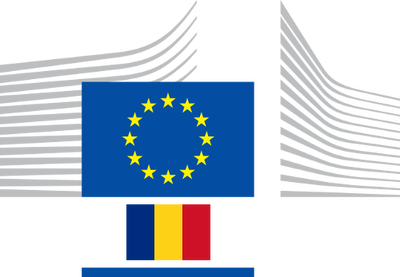
Ilie Gavril Bolojan (* 17. März 1969 in Birtin, Kreis Bihor) ist ein rumänischer Politiker (PNL). Er war von Dezember 2024 bis Februar 2025 Präsident des Senats. Seit Februar 2025 ist er kommissarischer Präsident Rumäniens.
伊利·加夫里尔·博洛扬(Ilie Gavril Bolojan,1969 年 3 月 17 日出生于比霍尔县比尔廷)是罗马尼亚政治家(民盟)。他曾于 2024 年 12 月至 2025 年 2 月担任参议院议长。自 2025 年 2 月以来,他一直担任罗马尼亚代理总统。
 *President and Prime Minister of Azerbaijan
*President and Prime Minister of Azerbaijan
 Ilham Aliyev
Ilham Aliyev

 Party and government
Party and government
 *President or Chairman
*President or Chairman

 *President and Prime Minister of Israel
*President and Prime Minister of Israel
 Jitzchak Herzog
Jitzchak Herzog
 President or Chairman
President or Chairman
 President or Chairman
President or Chairman
 Israel
Israel



 States of Asia
States of Asia
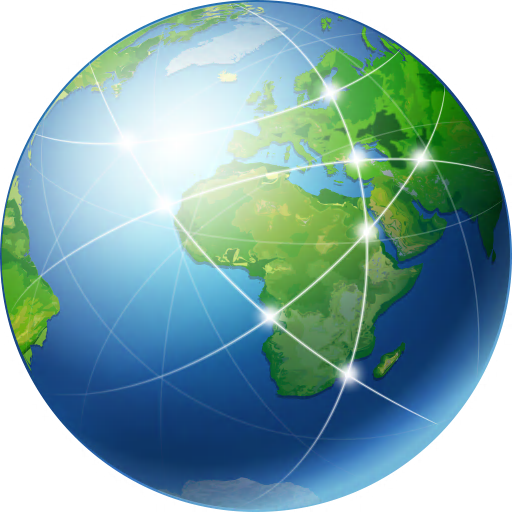 Geography
Geography